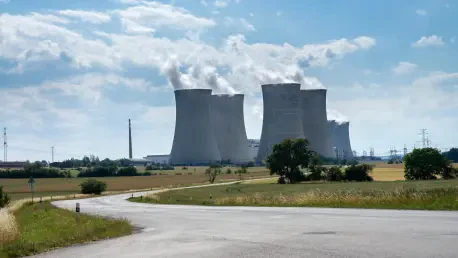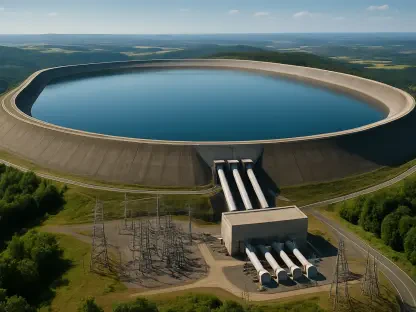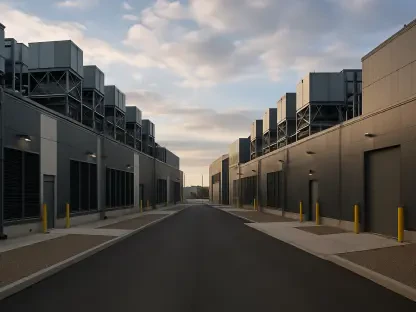The unexpected dismissal of Commissioner Christopher Hanson from the U.S. Nuclear Regulatory Commission (NRC) by President Trump has stirred significant concern throughout the nuclear industry landscape. This sudden change raises critical questions about the future of nuclear policy, as well as the NRC’s ability to manage nuclear projects effectively while preserving safety and regulatory compliance. With ongoing reforms underway at the NRC, the potential for disruption looms large, creating anxiety among both proponents of nuclear energy and watchdog organizations. The leadership vacuum in the Commission exacerbates risks, particularly with an additional vacancy expected unless the U.S. Senate confirms Chairman David Wright’s renomination by July 1. As the situation unfolds, there is growing apprehension that this shakeup could obstruct progress and hinder the ambitious goals set forth for the development of nuclear energy in America.
Uncertainties and Concerns in NRC’s Leadership
President Trump’s decision to dismiss Hanson and its implications for the NRC echo broader concerns about regulatory stability and operational independence. These concerns resonate with those supporting nuclear advancements and serve as a rallying point for criticisms regarding executive interference in regulatory affairs. Hanson’s removal not only challenges the Commission’s cohesion but also introduces potential quorum issues—especially crucial as regulatory reviews of advanced reactor projects are intensifying. Permit applications underway in Tennessee, Texas, and Wyoming for new reactor constructions exemplify the existing strain on NRC resources, which are actively engaged with numerous advanced reactor designs from over 30 developers.
The broader governmental context accentuates the stakes involved, as recent executive directives aim to enhance reactor approvals, improve the nuclear supply chain, and increase nuclear capacity substantially by 2050. A cohesive, fully staffed Commission is essential to navigate these directives while balancing statutory safety obligations. Within this pressure-cooker environment, unplanned shifts in leadership pose substantial barriers to sustaining a streamlined decision-making process necessary for meeting both national and global nuclear ambitions. The American Nuclear Society and the Nuclear Innovation Alliance, among others, argue that an understaffed NRC significantly diminishes regulatory efficiency, potentially derailing momentum gained by recent reform initiatives.
Impacts on Vision for Nuclear Expansion
Despite the ambitious roadmap for American nuclear expansion, Trump’s executive actions have ignited vigorous debate across the nuclear sector. Central to these discussions is the role of the NRC and its independence in regulating safety protocols free from political bias. Watchdogs, such as the Union of Concerned Scientists, underscore that NRC’s autonomous nature forms the bedrock of public trust in nuclear safety, shielding it from interests that might threaten its licensing rigor. Hanson’s firing has intensified scrutiny over whether political motives are undermining this trust to the detriment of foundational safety oversight responsibilities, as decision-making could become susceptible to externally influenced priorities over established safety criteria.
The dynamic environment surrounding nuclear policies reflects ongoing efforts to modernize the NRC’s operational framework. This effort aligns with legislative measures such as the ADVANCE Act aimed at expediting licensing processes, which are pivotal to achieving a boost in nuclear capacity. Yet skepticism persists over whether bold expansions might prematurely rely on the promise of advanced technologies that have yet to fully prove their efficacy. President Trump’s push for advanced reactors presumed to be inherently safer encounters criticism over potential reliance on technological assertions without complete scientific validation, which may contribute to further divisiveness among stakeholders who demand transparency and demonstrable evidence of safety.
Navigating Political and Regulatory Challenges
President Trump’s dismissal of Hanson from the NRC raises broader concerns about regulatory stability and independence. Advocates of nuclear advancements see this move as a rallying point against executive interference. Hanson’s departure threatens the Commission’s unity and may result in quorum issues, problematic as regulatory reviews of advanced reactor projects increase. Permit applications in states like Tennessee, Texas, and Wyoming underscore the strain on NRC resources as they engage with over 30 developers’ advanced reactor designs.
The broader governmental landscape highlights the significance, with recent directives aimed at fast-tracking reactor approvals, enhancing the nuclear supply chain, and boosting nuclear capacity by 2050. A cohesive, fully staffed Commission is critical to manage these initiatives while adhering to safety laws. Leadership changes disrupt the streamlined decision-making needed for national and global nuclear goals. Groups like the American Nuclear Society argue an understaffed NRC hampers efficiency, potentially undermining the progress of recent reforms.









